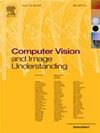Local Gaussian ensemble for arbitrary-scale image super-resolution
IF 4.3
3区 计算机科学
Q2 COMPUTER SCIENCE, ARTIFICIAL INTELLIGENCE
引用次数: 0
Abstract
In arbitrary-scale image super-resolution (SR), the local coordinate information is pivotal to enhancing performance through local ensemble. The previous method local implicit image function (LIIF) reconstructs pixels by using multi-layer perceptron (MLP), then refines each pixel by a weighted summation of nearby pixels (also called local ensemble), where the weight depends on the distances between the query pixel and the nearby pixels. Since the distances are fixed, so is the weighting mechanism, limiting the effectiveness of local ensemble. Furthermore, the weighted summation involves repeated reconstructions, increasing the computational cost. Orthogonal position encoding SR (OPE-SR) reduces pixel reconstruction complexity using orthogonal position encoding. However, it still relies on LIIF’s local ensemble method. Additionally, lacking scale information, OPE-SR demonstrates unstable performance across various datasets and scale factors. In this paper, we propose to conduct local ensemble in feature domain, and we present a new ensemble method, the local Gaussian ensemble (LGE), to utilize the local coordinate information more flexibly and efficiently. Specifically, we introduce learnable anisotropic 2D Gaussians for each query coordinate in the SR image, transforming normalized coordinates of nearby features into multiple Gaussian weights to effectively ensemble local features. Then a scale-aware deep MLP is applied only once for pixel reconstruction. Extensive experiments demonstrate that our LGE significantly reduces computational costs during both training and inference while delivering performance comparable to the existing local ensemble method. Moreover, our method consistently outperforms the existing parameter-free approach in terms of efficiency and stability across various benchmark datasets and scale factors.
任意尺度图像超分辨率的局部高斯综
在任意尺度图像超分辨率(SR)中,局部坐标信息是通过局部集成提高图像性能的关键。先前的方法局部隐式图像函数(LIIF)通过多层感知器(MLP)重建像素,然后通过附近像素的加权求和(也称为局部集成)来细化每个像素,其中权重取决于查询像素与附近像素之间的距离。由于距离是固定的,加权机制也是固定的,限制了局部集合的有效性。此外,加权求和涉及到多次重构,增加了计算成本。正交位置编码SR (OPE-SR)利用正交位置编码降低了像素重构的复杂度。然而,它仍然依赖于LIIF的局部集成方法。此外,由于缺乏尺度信息,OPE-SR在不同的数据集和尺度因子上表现不稳定。本文提出在特征域进行局部集成,并提出了一种新的集成方法——局部高斯集成(LGE),以更灵活有效地利用局部坐标信息。具体而言,我们为SR图像中的每个查询坐标引入可学习的各向异性二维高斯函数,将附近特征的归一化坐标转换为多个高斯权重,以有效地集成局部特征。然后,仅应用一次尺度感知深度MLP进行像素重建。大量的实验表明,我们的LGE在训练和推理过程中显著降低了计算成本,同时提供了与现有局部集成方法相当的性能。此外,我们的方法在各种基准数据集和尺度因子的效率和稳定性方面始终优于现有的无参数方法。
本文章由计算机程序翻译,如有差异,请以英文原文为准。
求助全文
约1分钟内获得全文
求助全文
来源期刊

Computer Vision and Image Understanding
工程技术-工程:电子与电气
CiteScore
7.80
自引率
4.40%
发文量
112
审稿时长
79 days
期刊介绍:
The central focus of this journal is the computer analysis of pictorial information. Computer Vision and Image Understanding publishes papers covering all aspects of image analysis from the low-level, iconic processes of early vision to the high-level, symbolic processes of recognition and interpretation. A wide range of topics in the image understanding area is covered, including papers offering insights that differ from predominant views.
Research Areas Include:
• Theory
• Early vision
• Data structures and representations
• Shape
• Range
• Motion
• Matching and recognition
• Architecture and languages
• Vision systems
 求助内容:
求助内容: 应助结果提醒方式:
应助结果提醒方式:


